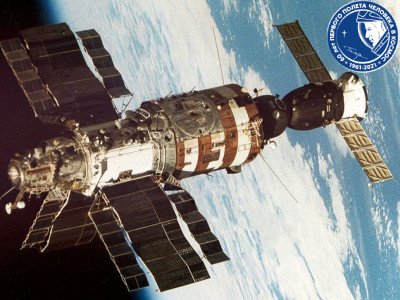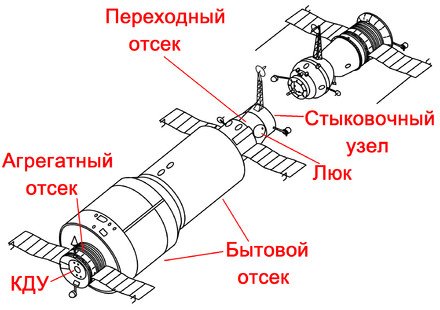60 years ago, a landmark event took place for the Soviet Union and all mankind – the first manned spaceflight. Yuri Alekseyevich Gagarin circled Earth aboard Vostok-1 spacecraft. And exactly 50 years ago, on April 19, 1971, the Proton-K launch vehicle launched the Soviet station Salyut into orbit. The space station was designed under the Long-Term Orbital Station program for civilian manned stations. According to the Flight Control Center, Salyut-1 stayed in space for 175 days before de-orbiting and reentry. Unburnt wreckage of the station was then found in Pacific Ocean waters.
Structure of Salyut, the first Soviet orbital station:
Structure of Salyut orbital station
The working compartment is the central part of the spacecraft comprising a cylinder 2.9 meters in diameter and 3.5 meters long. This part mates with a special tapered support measuring 4.15 meters in diameter, and 2.7 meters in length. A framework interconnecting components and assemblies is mounted inside the body. The working compartment also had some hollow space to accommodate the crew.
The transition compartment is 2 meters in diameter and 3 meters long (including a mating component) and features a sealed manway for transition to the Soyuz transport spacecraft. A manway is also located on the side of the transition compartment to enable entry into the station during construction work on Earth. Two non-rotating solar panels are mounted outer side of the transition compartment (they are sometimes referred to as “wings”). Scientific instruments for research are also located in the transition compartment.
The propulsion compartment accommodates the approach-correcting propulsion system (ACPS) and houses fuel tanks as well as orientation system engines with dedicated fuel tanks. It is known that the approach-correcting propulsion unit and orientation system engines were borrowed from the Soyuz spacecraft. However, in comparison to the predecessor, the orbital station has fuel tanks twice as large. “Wings” can be seen on the propulsion compartment as well as the transition compartment.
The same layout was used for later stations of the Salyut series. These craft were equipped with many instruments for carrying out research in extraterrestrial conditions in addition to astronomical observations, and observations of Earth’s atmosphere and surface. The orbital station provided huge opportunities, and this was a real breakthrough. It had much in common with artificial satellites orbiting the Earth. There was only one difference: crews inhabited the orbital station and were rotated from time to time using manned spaceships. Those very spaceships delivered fuel and materials necessary for operating the systems of the space station, spares for upgrades and repairs, food supplies, hygiene articles and letters for crew members, as well as materials for advanced scientific research, etc. Upon completing their mission, transport ships descended to Earth bringing back the returning crew and the results of the research.
This material was prepared using data from public sources.
Image source in the text and on the homepage: Space station Salyut-1























